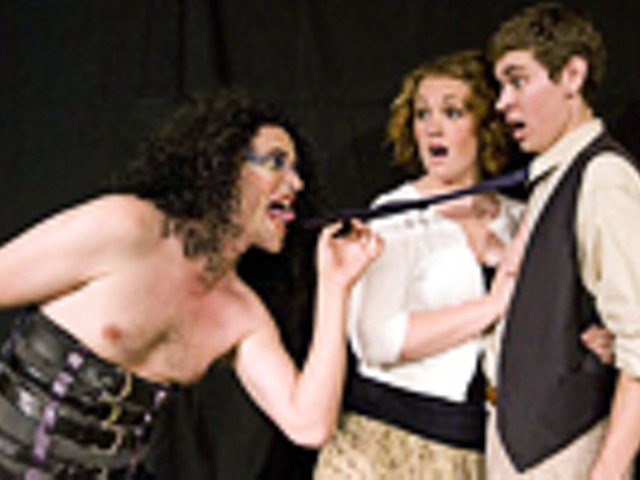Have you heard the radio spot for Meet Me in St. Louis at the Muny? It describes the classic 1944 MGM film upon which this show is based as "the tenth-best movie musical of all time." Who writes these ads? Since when was tenth-best a selling tool? (Even if Meet Me in St. Louis turns out to be the worst production this summer, it'll still be the seventh-best stage musical of the Muny season.) There are all kinds of lists. Woody Allen, for instance, has often proclaimed the Vincente Minnelli-directed film as his second-favorite movie musical (after Singin' in the Rain). Allen regards the story of the Smith family on the eve of the St. Louis World's Fair as "almost like American folk art."
But hey, that's the film. The stage version is hardly artful. Ever since its debut at the Muny in 1960 — and despite constant revision through the decades — its would-be adaptors have always operated under the misapprehension that a stage musical must feature at least twelve or fifteen songs, regardless of quality. Since the movie contained only three original songs, these various stage incarnations are always cluttered with time-devouring music that only succeeds in smothering whatever it was that once made Meet Me in St. Louis so special.
The evening gets off to a solid start. We meet most of the family members. We are charmed by seven-year-old Elizabeth Teeter as the irrepressible Tootie. The talented Berklea Going, who has been growing up at the Muny before our eyes, lends fine support as Agnes. "Whenever I'm With You," the only added song that complements the story, buoyantly conveys the closeness of three generations of Smiths. All in all, Act One is a relatively painless hour.
But Act Two is mostly one lame tune after another, five or six in all. These arbitrary songs are showstoppers in the literal sense of the phrase, for they bring any sense of story to a yawning halt. This music enhances nothing. And because director Paul Blake has staged the production without a shred of shading or subtlety, we end up caring for no one. Characters that were richly nuanced on the screen are played here as one-dimensional cutouts.
Yet someone must like this tenth-best, third-rate musical. It played to a huge opening-night crowd. And in fact there are isolated pleasures. Best of all, in the lead role is a spunky Esther Smith. Brynn O'Malley doesn't waste a second trying to emulate Judy Garland's coyness; this Esther is all sassy pizzazz. The show is never dull when O'Malley is center stage; she is a true find, an authentic musical-theater performer who is not afraid to command the Muny stage. When O'Malley is singing duets with Max von Essen's boy next door, the show's limitations fade away. (Max, a word of warning: Whoever selected your Act One hat is no friend. It makes you look like the town dunce.) Lewis J. Stadlen brings a fun back-story to Grandpa: For the first time we realize that in his youth Grandpa was a standup comic on the vaudeville circuit. This show can use humor, and Stadlen does his best to inject some.
But isolated pleasures are just that: You must look to find them. At intermission the fellow sitting behind me, tired of looking, told his wife, "I think they can retire this show." And that was after the good act! By the time the evening finally wound down, at which point we had been bludgeoned by the title song eight — count 'em, eight — times (not counting the overture), the contrivance before our eyes remained a mystery: In nearly a half-century of revisions, why have its various creators never figured out that Meet Me in St. Louis is first and foremost a story about family and home — and that everything else is secondary? Instead of submitting to the evening's phony nostalgia, we leave Forest Park with a lingering sense of having stayed too long at the fair.
Click here for a complete list of St. Louis stage capusles.





